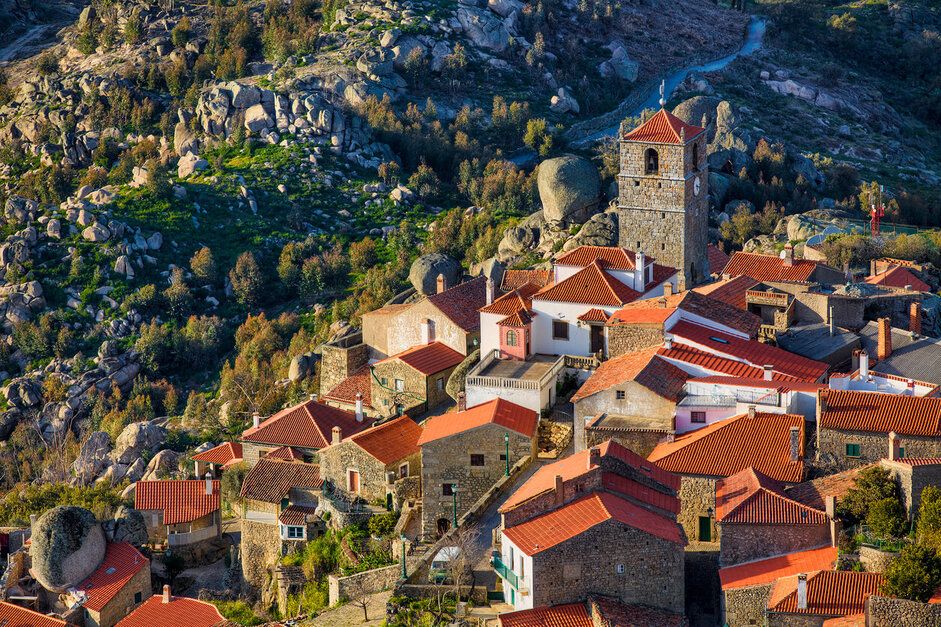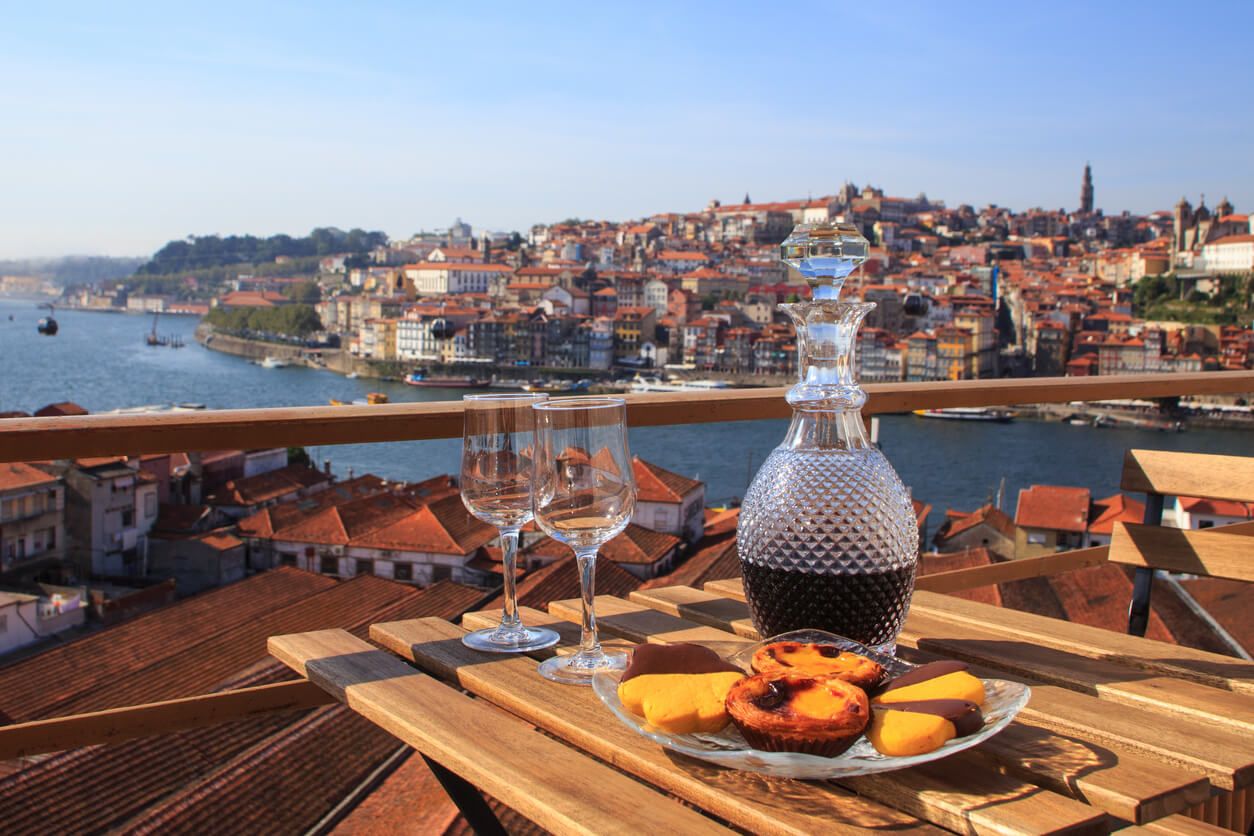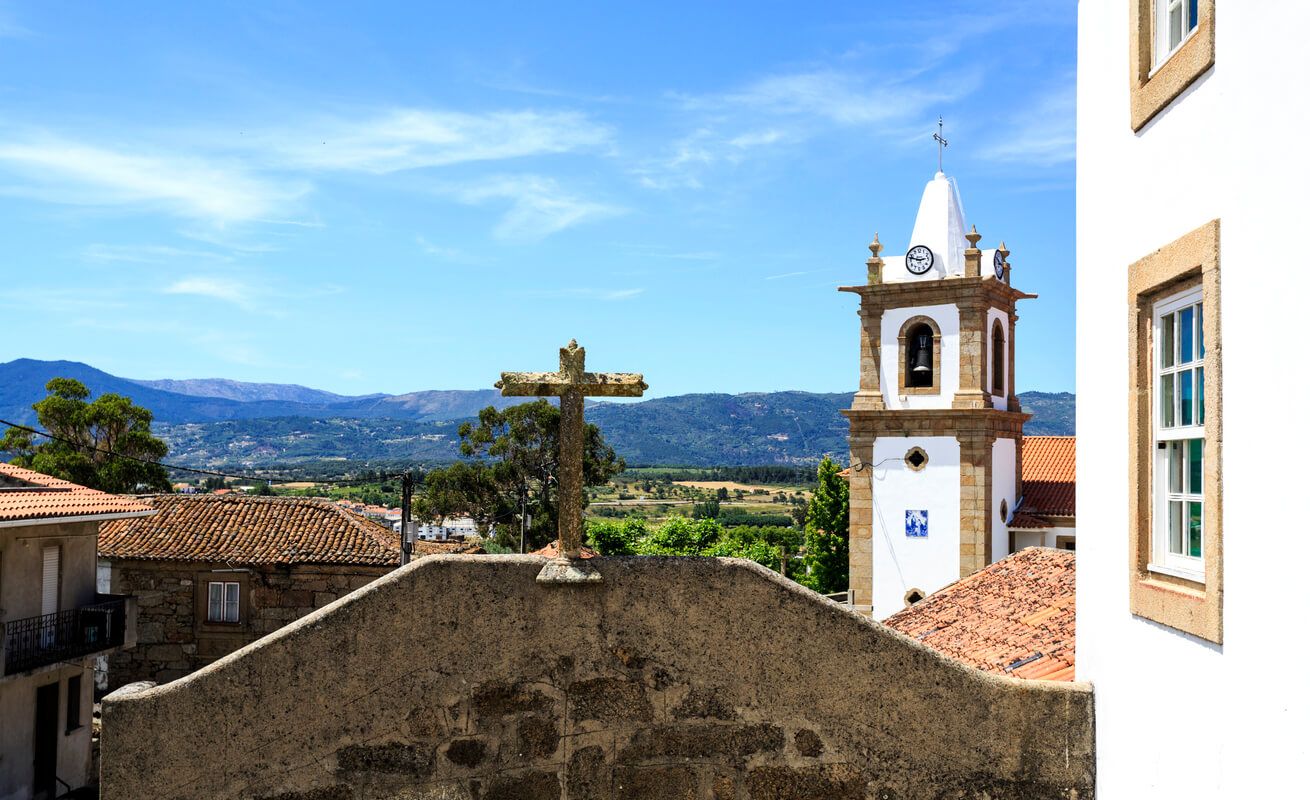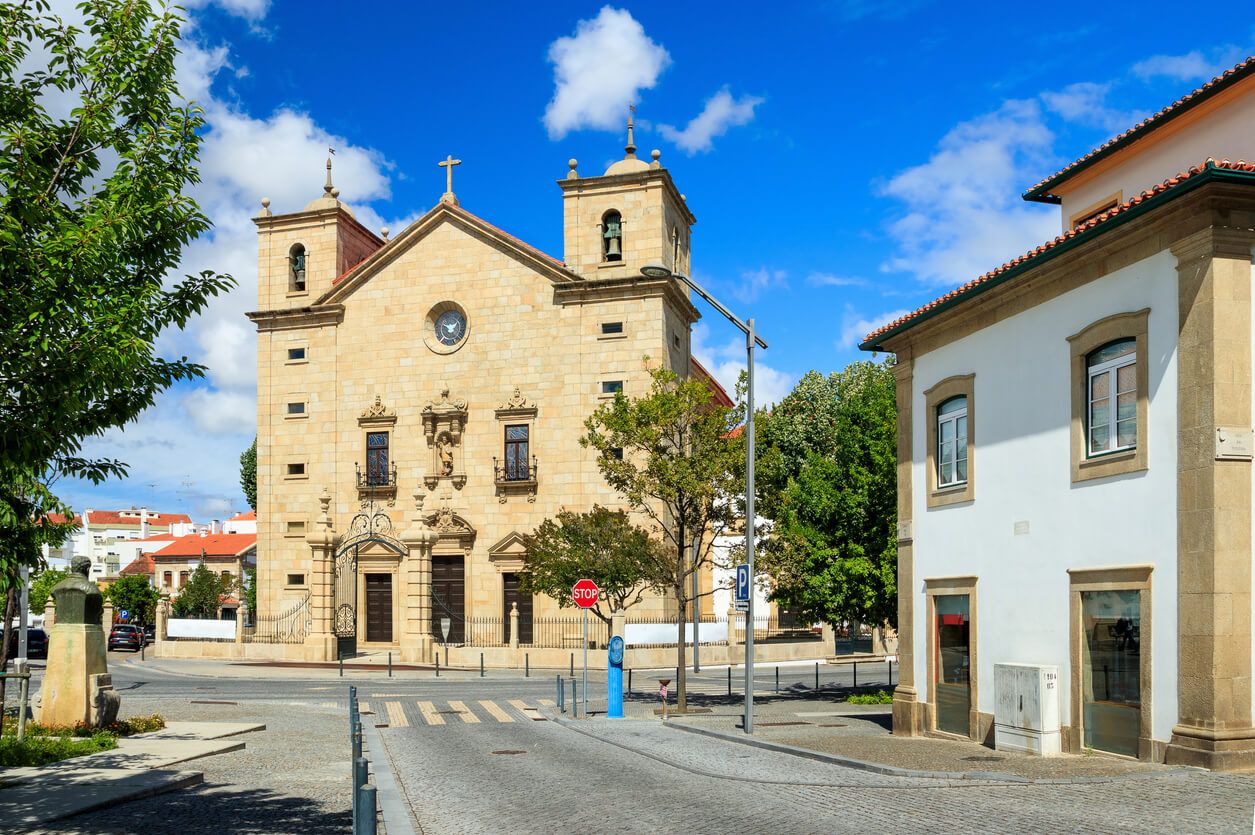Why buy property in Castelo Branco District?

Tucked away in central Portugal's Beiras region, Castelo Branco is the antidote to tourist-laden coastal resorts. Here's why you should consider this hidden gem:
A culinary paradise for the adventurous

For those tired of sardines and pastéis de nata, Castelo Branco serves up a more intriguing menu. The district's crown jewel is its namesake cheese - a pungent delicacy made from sheep's milk that's worth crossing borders for. The Serra da Estrela region produces what many consider Portugal's finest cheese, made from milk of sheep who somehow manage to graze on near-vertical mountain slopes. Local specialties include maranho (sheep stomach stuffed with rice and meat - more delicious than it sounds) and traditional game dishes that reflect the region's wild heritage.
Nature that makes the Algarve look tame

While others jostle for space on crowded beaches, you could be spotting rare Iberian lynx in Serra da Malcata Natural Reserve or skiing (yes, skiing!) in Serra da Estrela - Portugal's highest mountain range. The district is a paradise for hikers, wildlife enthusiasts, and anyone who prefers their Portugal with a dash of wilderness. The landscape is dotted with enormous granite boulders that look like they've been arranged by a giant playing Jenga, creating a uniquely dramatic backdrop for your new life abroad.
Living history (literally)

Castelo Branco houses were social distancing before it was cool - many are built into and around massive boulders, particularly in the famous village of Monsanto, dubbed "the most Portuguese village in Portugal" (despite looking nothing like any other Portuguese village). The district is peppered with Knights Templar castles, Roman ruins, and secret Jewish quarters where families practiced their faith in hiding for 500 years. If you're looking for a home with history, how about a house that was already ancient when Columbus was in short trousers?
A proper Portuguese lifestyle

While the Algarve increasingly resembles a cosmopolitan suburb with better weather, Castelo Branco remains stubbornly, gloriously Portuguese. The district capital offers all the amenities you'd expect from a modern city, including baroque gardens that look like they were designed by Salvador Dalí, while traditional villages like Idanha-a-Velha and Belmonte offer an authentic slice of Portuguese life. Here, you're more likely to be invited to a traditional festa than a quiz night at the British pub.
Value for money that will make your friends jealous

Property prices in Castelo Branco remain surprisingly reasonable, especially considering the quality of life on offer. Whether you're after a traditional granite house in a historic village or a modern apartment in the district capital, your money goes significantly further here than in Portugal's more famous regions.
What's it like to live in Castelo Branco district?

Life here moves at a different pace - one that's more aligned with the seasons than the clock. Summers are hot and dry, perfect for sipping vinho tinto in plaza cafés, while winters bring snow to the Serra da Estrela and cosy evenings around wood-burning fires. The district's position between the coast and the Spanish border means you get the best of both worlds: Atlantic breezes in summer and shelter from the worst of the winter storms.
The local population is a mix of traditional farmers, modern professionals in the district capital, and a growing international community drawn by the authentic lifestyle and remarkable value for money. Unlike some expat destinations, here you'll need to embrace Portuguese culture - and maybe learn a few words beyond 'obrigado' - but the rewards are worth it.
Essential Information about Castelo Branco district

Healthcare
The district is served by several hospitals and health centres, with the main Hospital Amato Lusitano in Castelo Branco city providing comprehensive care. While facilities might not be as extensive as in major cities, the quality of care is excellent, and you're more likely to get personal attention than in busier urban centres.
Employment opportunities
While traditional industries like textiles (particularly in Covilhã) and agriculture remain important, the district is increasingly attracting digital nomads and remote workers drawn by the low cost of living and high quality of life. The University of Beira Interior provides academic opportunities and helps drive innovation in the region.
Schools and education
The district offers a mix of public and private schools, with the University of Beira Interior in Covilhã providing higher education options. While international schools are less common than in coastal areas, this can be an advantage for families wanting their children to become truly bilingual.
Getting around
The A23 motorway connects the district to Lisbon (about 2.5 hours drive), while regular train services link Castelo Branco city to major Portuguese destinations. The nearest international airports are in Lisbon and Porto, though smaller regional airports serve some routes.
Castelo Branco district property market statistics

According to Portugal's National Statistics Institute (INE), as of Q4 2023, Castelo Branco district has seen steady growth in property prices, though they remain significantly lower than coastal regions and major cities. The average price per square meter stands at €1,124, representing a 7.2% increase from the previous year. While this is well below the national average of €2,475/m2, it reflects the district's growing appeal to both domestic and international buyers seeking authentic Portuguese living at reasonable prices.
The district has seen particular interest from buyers from France, Belgium, and the Netherlands, attracted by the combination of affordable properties and traditional lifestyle. The municipality of Castelo Branco itself has shown the strongest price growth, followed by Covilhã in Portugal, particularly in areas near the university.
Where to buy property in Castelo Branco district
Castelo Branco city

The district capital offers the perfect blend of modern amenities and historical charm. The city centre features elegant squares and wide avenues, while the old town climbs up to the castle with its medieval streets and traditional houses. With a population of approximately 56,000 (2021 Census, INE), it's large enough to provide all essential services while maintaining a friendly, manageable scale.
Property prices start from: €10,000 for ruins in need of renovation, €30,000 for habitable houses.
Look out for: Properties near the stunning Jardim do Paço Episcopal, where baroque sculptures provide endless entertainment.
Fundão

Nestled between the Serra da Gardunha mountains and the Cova da Beira valley, Fundão might be famous for its cherries, but there's more to this agricultural powerhouse than just fruit. With around 27,000 inhabitants, it's a bustling town that's managed to preserve its traditional charm while embracing modern industries - particularly in its growing tech sector. The surrounding villages offer everything from grand manor houses to rustic cottages, while the town itself provides all the amenities you'd expect, plus some you wouldn't (there’s a cherry-themed museum!). Its strategic location between Castelo Branco and Covilhã makes it perfect for those who want easy access to both cities while paying village prices for their property.
Property prices start from: €10,000 for village house ruins and €30,000 for habitable houses.
Look out for: Properties in the surrounding villages with cherry orchards - they can provide a tasty additional income stream.
Monsanto
Dubbed "the most Portuguese village in Portugal" (despite looking more like something from The Flintstones), Monsanto is built among and around massive granite boulders. Some houses use rock formations as their roofs or walls, creating truly unique properties. While the village has a small permanent population, it's becoming increasingly popular with artists and remote workers seeking inspiration.
Property prices start from: €30,000 for traditional houses requiring renovation.
Look out for: Houses with original granite features - but check carefully for damp issues where buildings meet the rocks.
Covilhã

Known for its textile heritage, Covilhã has reinvented itself as a university town and gateway to the Serra da Estrela. With around 51,000 inhabitants (2021 Census, INE), it offers excellent facilities while providing easy access to Portugal's only ski resort. The student population keeps the town lively, and rental yields can be attractive.
Property prices start from: €15,000 for ruins in need of renovation and €25,000 for habitable houses.
Look out for: Properties with mountain views - they can command premium rental rates during ski season.
Idanha-a-Velha

One of Portugal's oldest settlements, this former Roman city (then called Egitania), Idanha-a-Velha offers a unique opportunity to live among ancient history. With its Roman walls, Visigothic cathedral, and medieval castle, it's like living in an open-air museum - albeit one with internet access and modern plumbing.
Property prices start from: €35,000 for houses needing renovation.
Look out for: Properties within the historic walls - but be prepared for strict renovation regulations.
Belmonte

Home to Portugal's last surviving medieval Jewish community and birthplace of Pedro Álvares Cabral (who 'discovered' Brazil), Belmonte combines fascinating history with modern amenities. The town of around 6,800 inhabitants (2021 Census, INE) offers excellent local produce, including renowned kosher wines.
Property prices start from: €20,000 for village houses in need of renovation
Look out for: Properties in the historic Jewish quarter - they often feature unique architectural details.
Sertã

For those seeking a more rural lifestyle, Sertã offers traditional stone houses set among pine forests and river beaches. The town provides essential amenities while maintaining its agricultural character. Popular with nature lovers and those seeking to establish rural tourism businesses.
Property prices start from: €10,000 for rural properties in need of renovation
Look out for: Quintas (country estates) with enough land for self-sufficiency or tourism projects.
The property prices listed are indicative starting prices based on local real estate listings as of early 2025. Due to market fluctuations and varying property conditions, current prices may differ. We recommend working with local agents to understand current market conditions.
Whether you're seeking a boulder-built house in Monsanto, a ski apartment in Covilhã, or a rural quinta near Sertã, Castelo Branco district offers remarkable value for money compared to coastal regions. The key is to balance authenticity with practicality - while that 17th-century cottage might look charming, make sure it has decent internet before committing to working remotely from it.
